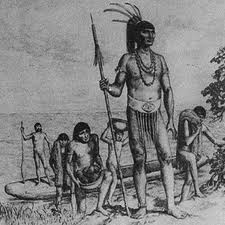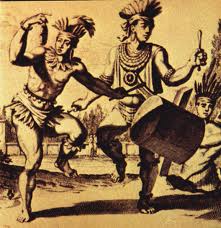|

Cuba's history dates back many millions of years when you look at the country's impressive geology.
Going beneath the country to the Caribbean plate below, the plate has moved from the Pacific Ocean into the Caribbean Sea.
This started happening at some point during the Cretaceous period about a hundred million years ago, before the dinosaurs disappeared from the planet.
Cuba has been in its present day form for 5 to 10 million years, although originally the land was submerged below water.
The first human settlers in Cuba came from the south of the North American continent, as far as Mississippi and Florida. The first principal migration is believed to have been about 8000BC and the second around 4500BC with settlers from the Central America area. Scientists have found proof of human life in Cuba in 4000BC, but believe that Cuba's history of human life actually goes back further than that.

The Guanajatabey were believed to be the first settlers in the country, followed by the Ciboney and then the Taíno.
The Guanajatabey were fishermen and hunters who lived in small groups rather than villages, often in the many caves found throughout the country. They mostly lived in the western part of Cuba, but were known to have been a group who lived across the West Indies. They were a nomadic culture who used natural materials such as shells and stones as tools.
The Ciboney were the second group and far more advanced than the Guanajatebey, using stones as tools and cutlery which were finished to superior standards. Both the Ciboney and Guanajatabey were stone age people.
The third group, the Taíno people, were invaders from a neighbouring island who arrived in Cuba about 1000 years ago. They were farmers who lived in communities and had developed skills in ceramics and weaving.
Taíno people were the most advanced and their societies were run by caciques (chiefs) and a lot of Taíno vocabulary for flora and fauna was adopted by the Spanish and is still in use today as well as other words which have entered our vocabulary, such as barbeque, canoe and hammock. The name Taíno is also a Taíno word, meaning 'the good ones'.

Cubanacan was the Taíno name for Cuba, which is where the country name came from, following a number of Spanish names.
Cultivators of beans, yucca, corn and tobacco, the Taíno also built water canals and a network of stone pathways across Cuba. They were great sailors (within their domain) and creative people, producing many woven cotton hammocks, sails and ropes as well as ceramics, jewellery and entertainment in the form of music and dance.
The relatively tranquil way of life for the Taíno in their island of plenty all changed with the arrival of the Europeans.
|